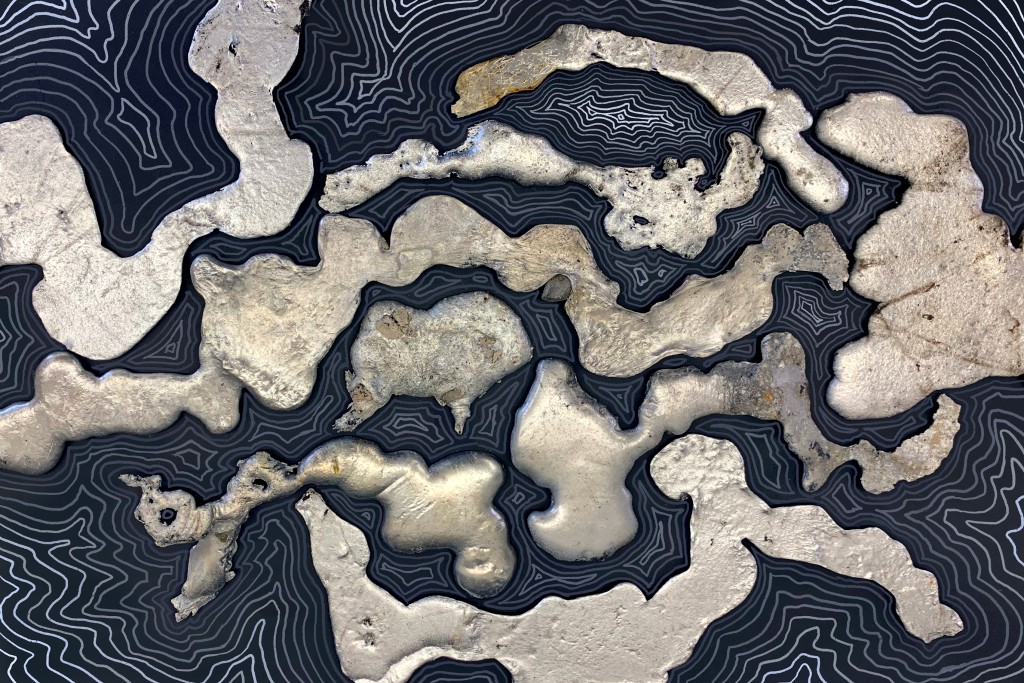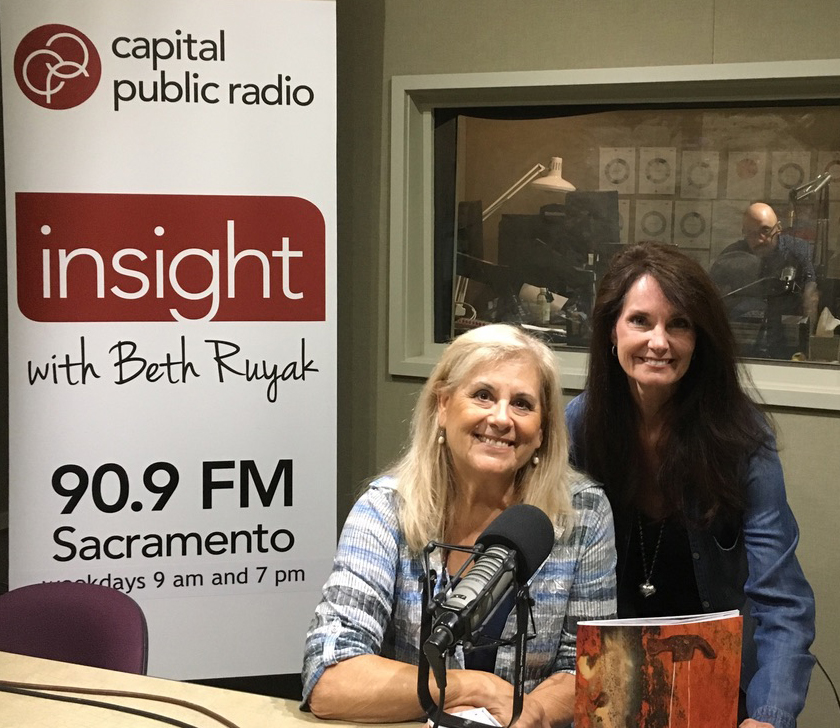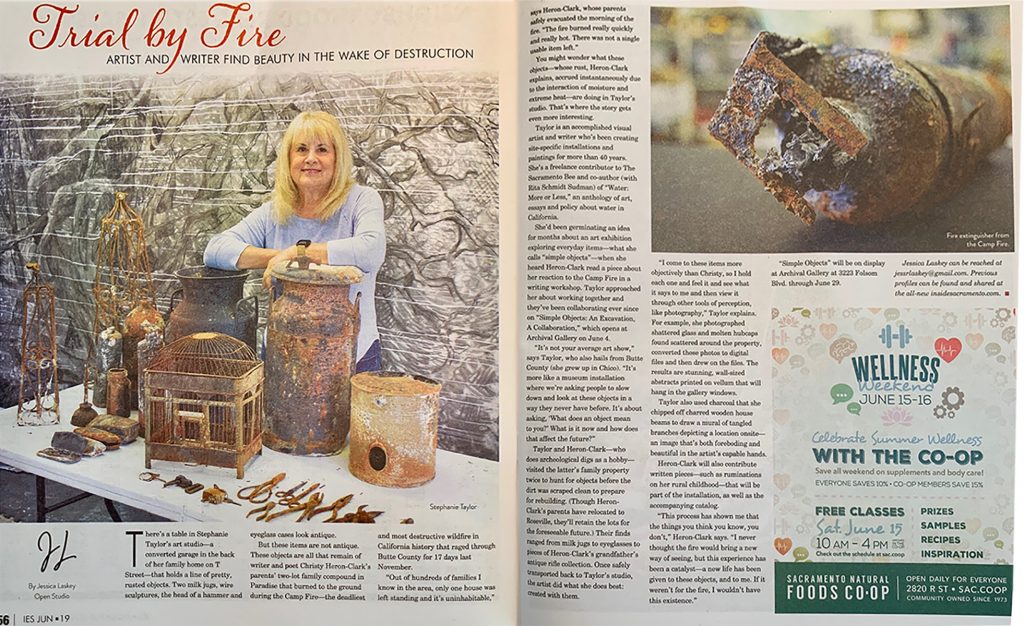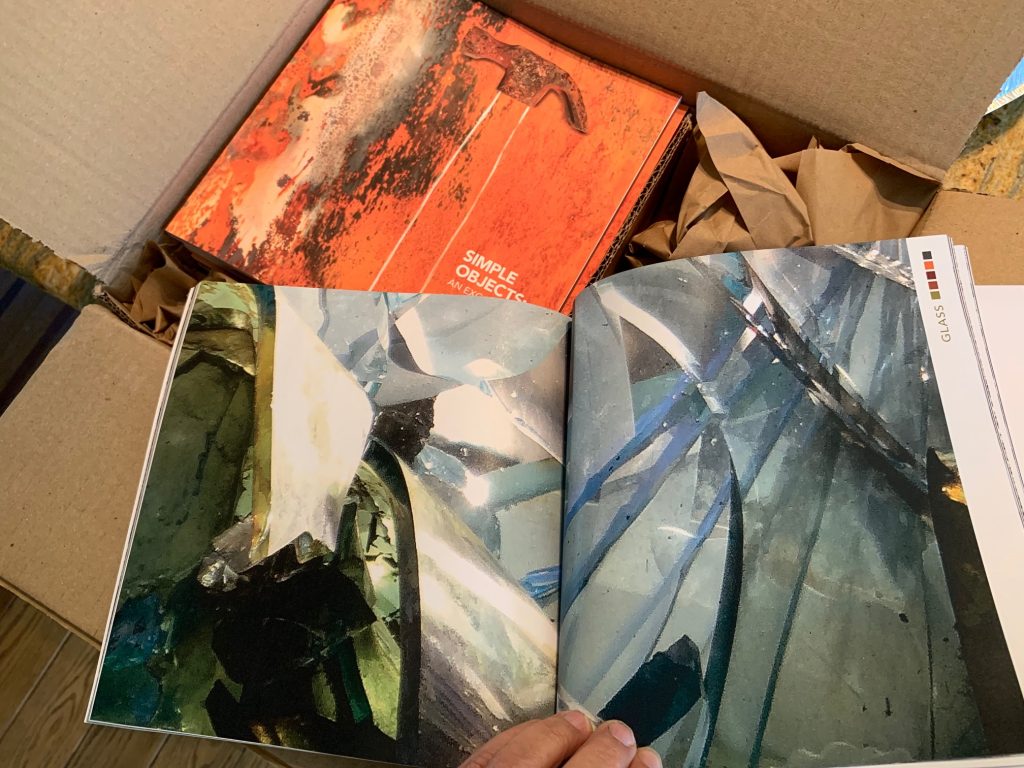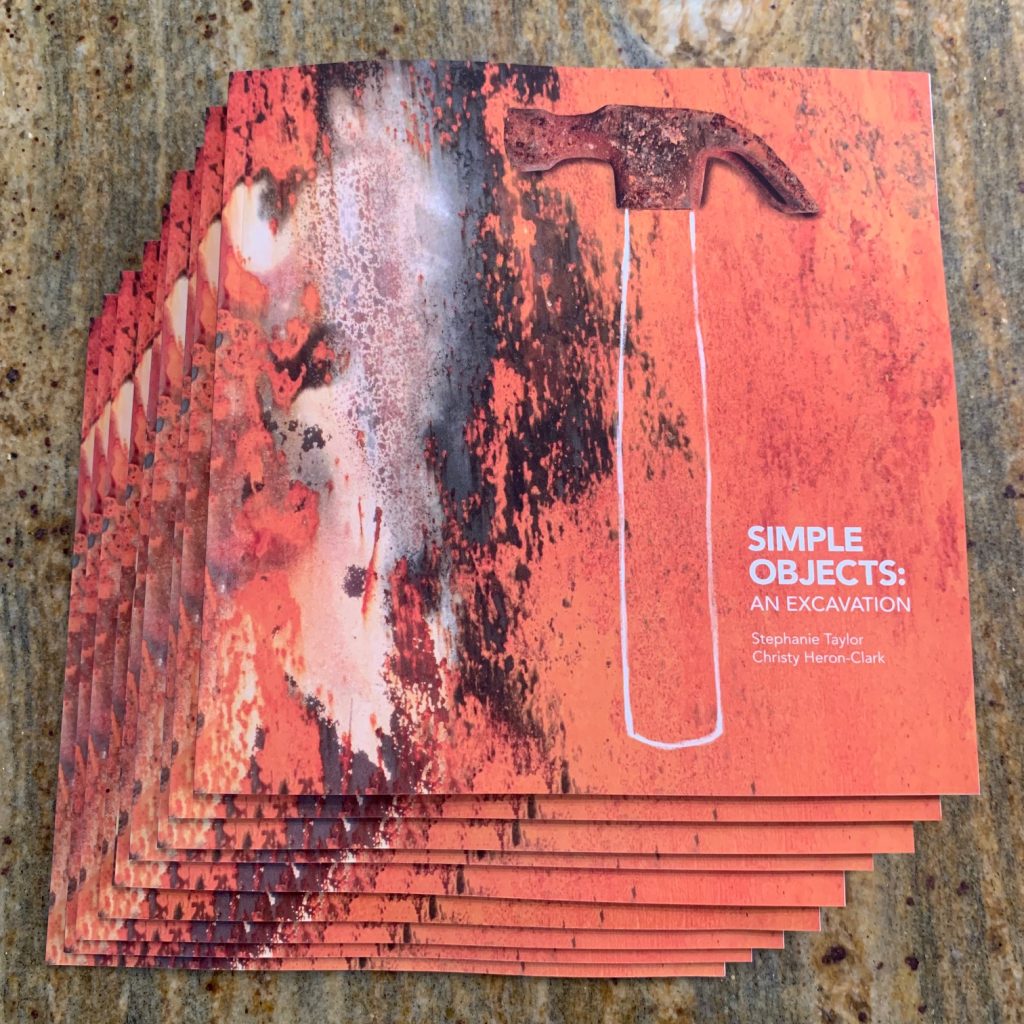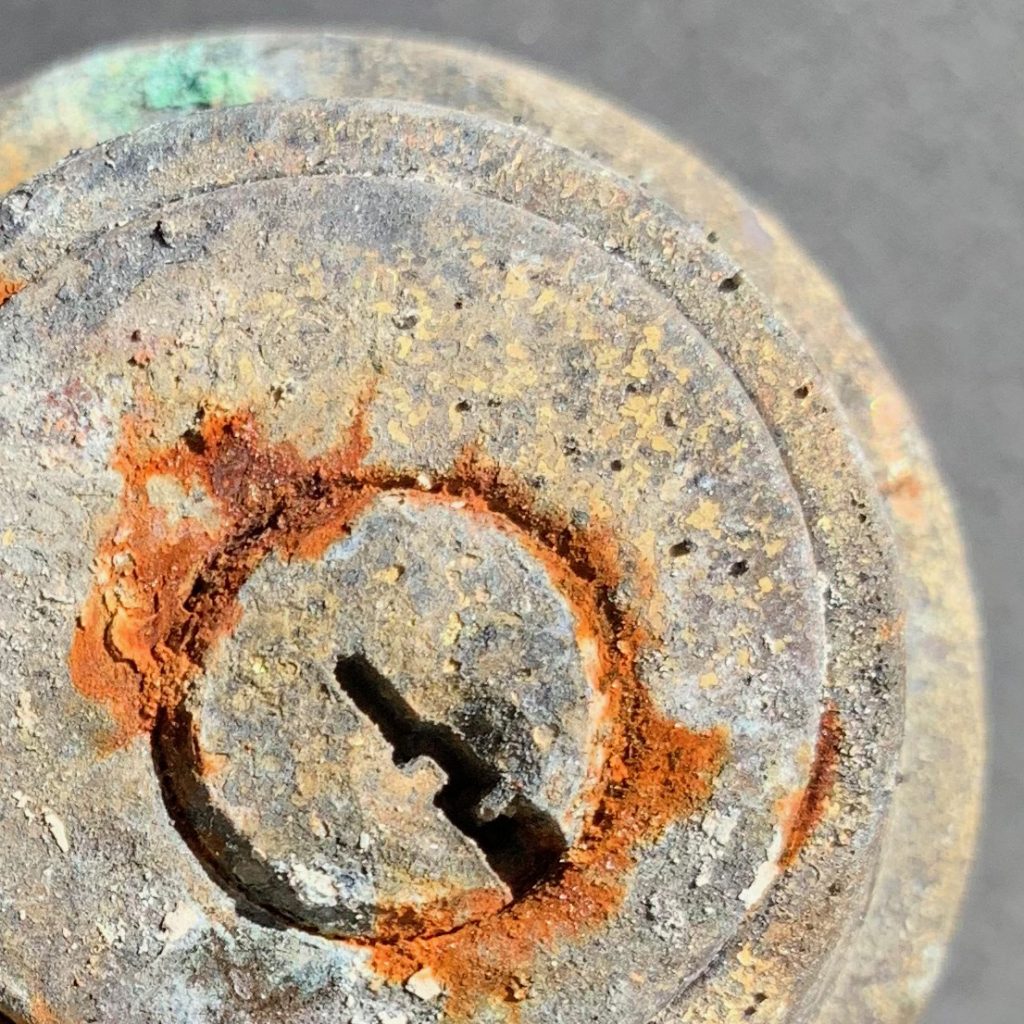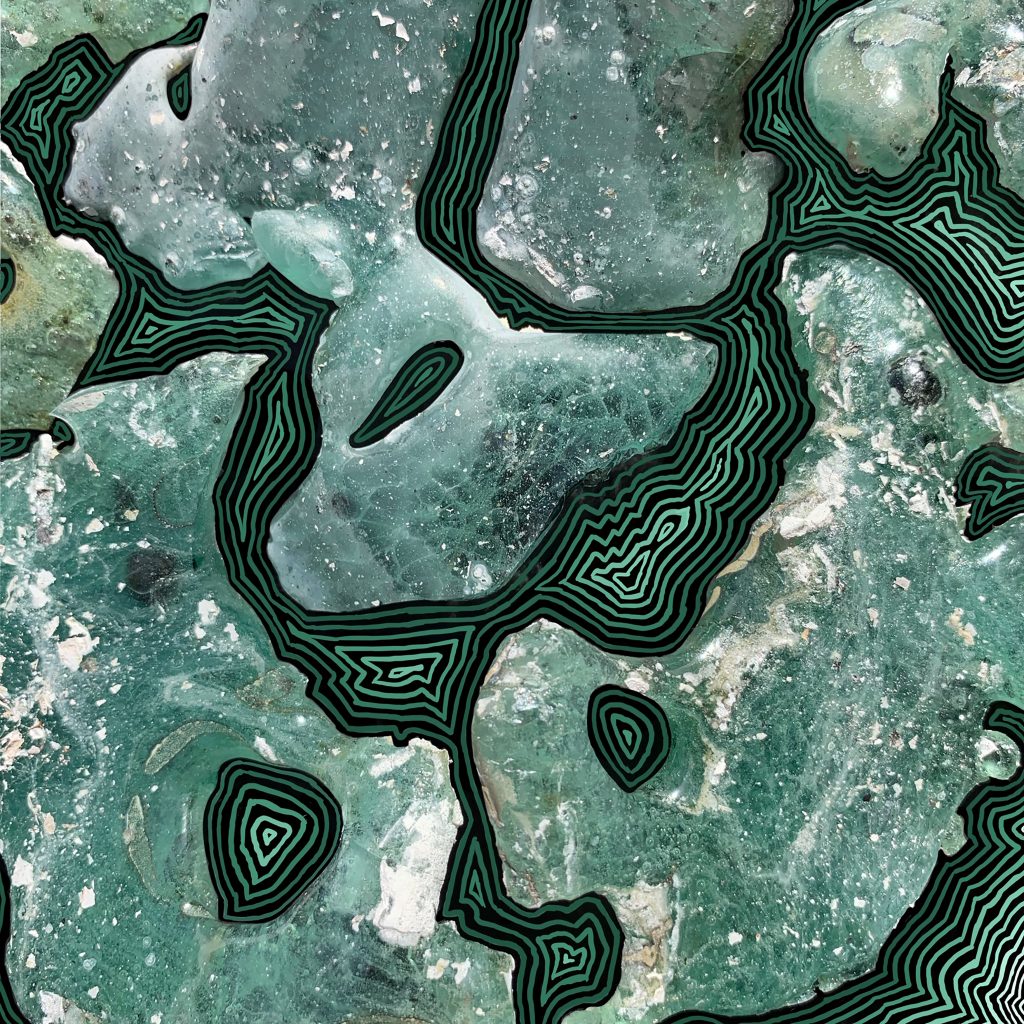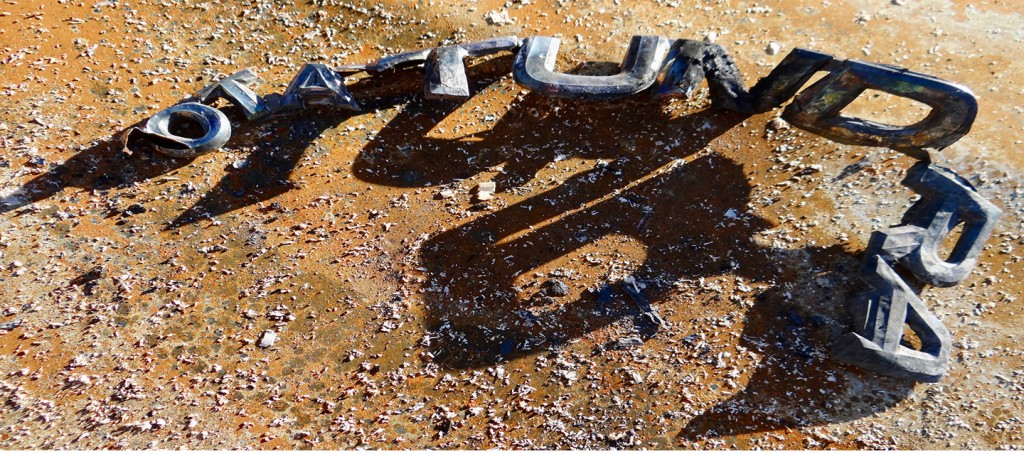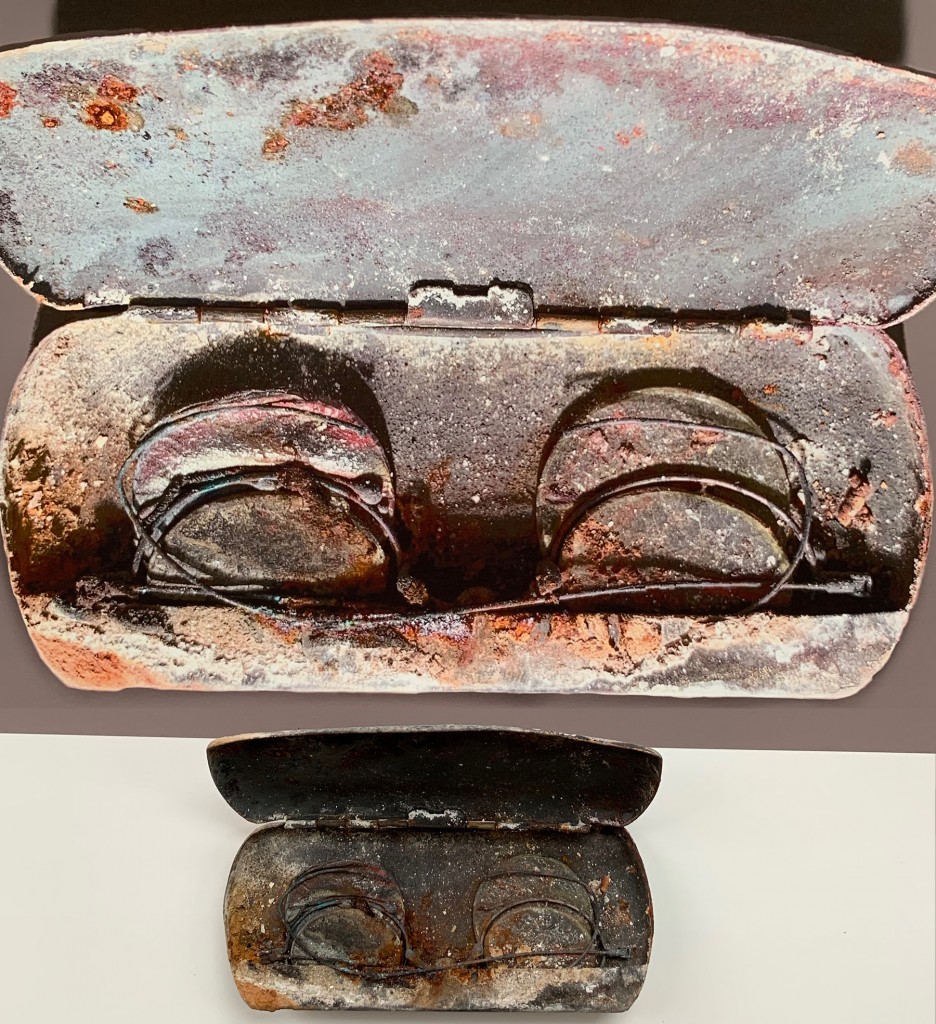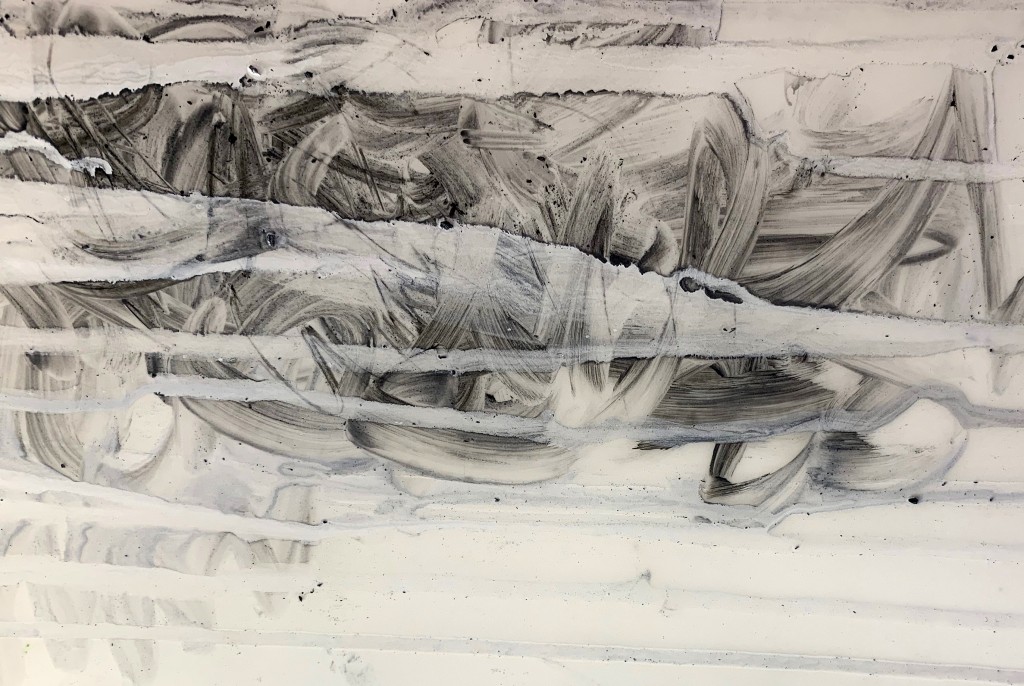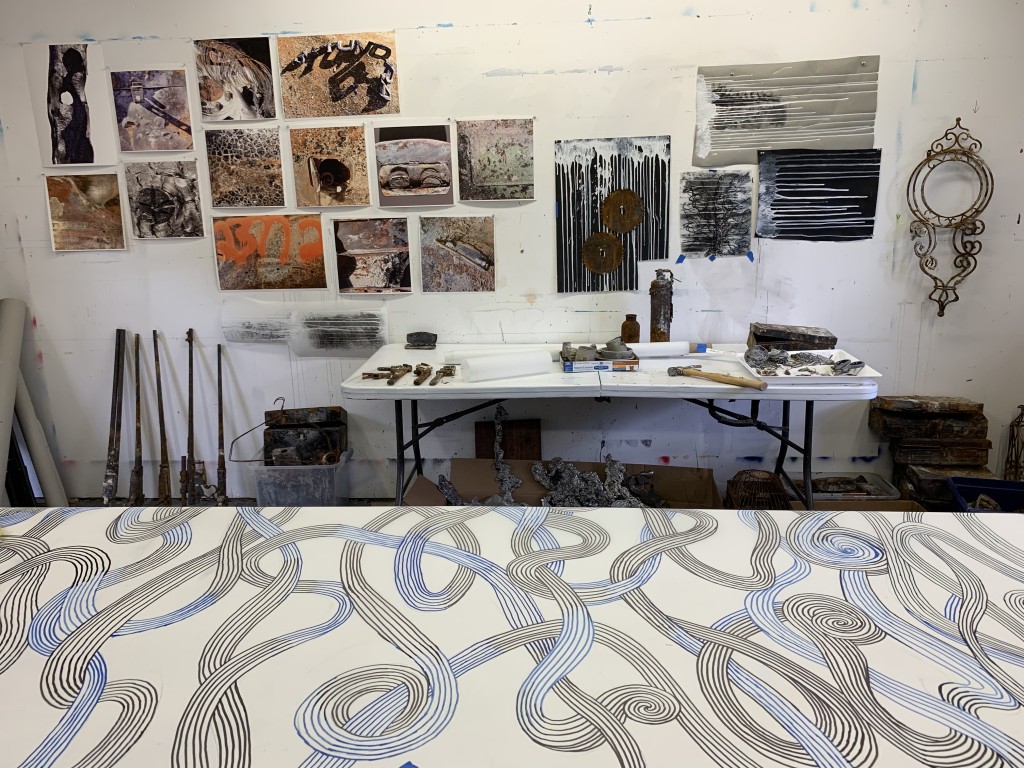Simple Objects: An Excavation
Update August 5: The response to the installation at Archival Gallery was gratifying. All the objects are packed safely away, waiting for the next installation. We are pleased to announce that the installation will be traveling to the Sutter County Museum in Yuba City, September 28-December 1, with a reception September 27th.
Update June 20: Beth Ruyak at Insight is an amazing interviewer, who makes a guest feel like they’re just having a conversation. I so appreciated that she made time to visit Archival, and read our catalog. The hardest part of a live interview is not saying “ummmmm.” Thank you, Beth. Missing Christy, who is on her fabulous pre-planned, annual family vacation.
Link to CBS segment, broadcast in Sacramento and the Bay Area.
Update June 18: Many thanks to the crew at Good Day.
Good Day live interview at Archival Part 1
Good Day live interview at Archival Part 2
Update June 17: Museum experts say that the average visitor spends 30 seconds in front of a work of art, and that’s at a museum. Our hope was that people visiting this installation would slow down to contemplate items and interpretations, and they have. Visitors have been engaged, thoughtful and responsive. While the opening night was amazing, the best way to visit is during a quiet time. Sit awhile. Contemplate what you’ve retained, or would.
What are your objects?
“Thank you so much for inviting me to your installation of art based on the Northern California fires at the Archival Art Gallery. Your art was stunning in its raw beauty and heartbreaking display of the devastating power of nature. Your artful vision of the archeological evidence of the humble things in life such a charred eye glasses, ear rings, watches, fishing lures and many other things of personal use affected me deeply. These common objects once held in the hands of ordinary people was a profound testament to the simple beauty in human life. While the gallery was filled with people enthusiastically admiring your work, I was quiet in my heart with reflection. Your art is executed with brilliant technique, but it is more. In some way you transported me back to the time I visited the destructive travesty of Pompeii. Your art tells stories inviting the viewer to participate through their own life experiences. Brava for your incredible vision in the power of art!” Ron Cunningham, Artistic Director Emeritus, Sacramento Ballet
It was so gratifying for Christy and I to receive such a group of friends and visitors. I’ll be posting more about the opening night. I didn’t want to be that person that interrupts greetings with my camera, except for these two. Please note that Archival is donating 100% of their proceeds from the sale of prints and catalogs to the North Valley Community Foundation- details to follow.


Update June 7: The objects as they exist, after the fire, are now installed, along with photography and drawings.
Some thoughts about process
This has been an intense and emotional experience for me, from our first archeological dig in late January, and the second trip in March, to holding and documenting each item. Christy and I come to each object from two different directions. She brings her history, what each meant to her and where they were located in her parent’s and grandparent’s homes, before the fire. I can only respond to each as it exists now, transformed. I held each gingerly, and contemplated toxic surfaces, form, the effect of light and cast shadow.
About the photography: while I’ve been using a camera as a research tool for my work for decades, I’m not a technical shooter. Several of the objects presented focusing challenges. The camera had its way with the images. Searching for the most essential part of an image, I cropped. I only altered a couple of the images, mostly to enhance a portion, not alter the content. The camera sees what I cannot see.
About the drawings: a spontaneous process, none of the drawings were planned ahead, except the large charcoal on the back wall. The idea of drawing with charcoal from burned lumber came to me in the car, even before we got to Paradise. Later, on the way to Paradise Lake, we passed through a forest of distorted trees, not pines, closer to the ground, in a field of serpentine rocks. Those black, twisted branches settled in me, as if I was passing through a surreal nightmare, and I was. The smaller drawings were inspired by the ability to pull and image into a drawing program on an iPadPro, with an Apple pencil. For an old-school drawer like myself, this resembles an artistic miracle: making layers, testing, erasing, adding, eliminating. Glass from the shattered rear window of a car was my first effort, and soon, a topographic feeling took shape.
Update June 4: The exhibition opens at 11 today. Second Saturday should be swamped, and while we’d love to see you there, we hope you’ll be able to visit Archival Gallery during a quiet time. This is not your average art show. We hope you’ll slow down, sit awhile, contemplate, and perhaps think of your own simple, every day things that mean so much to you. The catalog is now available at the Gallery, all of the Gallery proceeds will to the North Valley Community Foundation, to benefit arts programs there. Details haven’t been formally arranged as yet. Or on Amazon, where a portion will go as well. Again, details to follow.
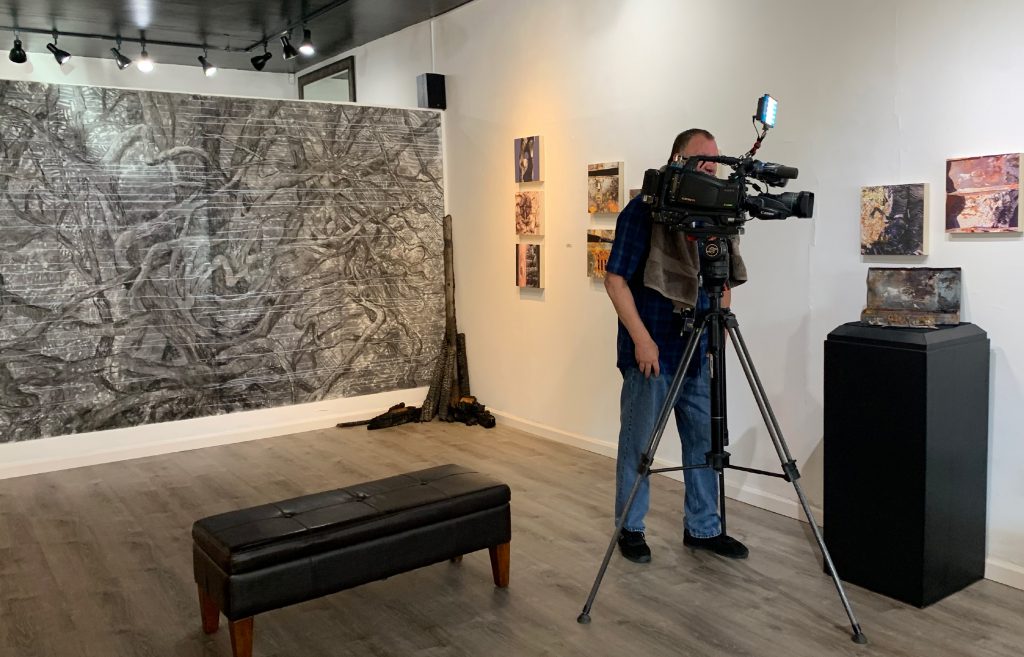
Inside Sacramento feature on the exhibit.
May 31: So excited. The exhibition catalogs have arrived today
A stack of exhibition catalogs. 8.5″ square, matt finish, 85 pages.
Update May 26: There’s nothing like working on an obsessively consuming project to make the year pass quickly. From our first trip to Paradise in late January, and our second in March, Christy and I have both been furiously writing and feeling our way through and around these objects.
We decided that as a complement to this obsessiveness, we should create an exhibition catalog. Maybe it will be ready by the opening of the exhibition on June 8th, and maybe it won’t: but soon. It’s helped to clarify, if there can be clarification. We also hope, in some way, to contribute to a fund for art students in Butte County, but though we know which foundation, we haven’t worked out the details, yet.
Update April 26: A number of images are ready to print. Also, we’ve started working on an exhibition catalog, an entirely satisfying experience. Figuring out categories for all these objects and images has been a challenge. Mostly, images can be labeled into texture, glass, locks, actual objects, landscape, and drawings. Christy and I have each written short responses to several of the images. It’s interesting that we each come to this project from two different angles: she from the past – her memories and emotions, and I respond to each as present reality. The unifying element for us is contemplation, and that takes time.



Update April 5: I’ve documented all the objects we’ve found to date. As soon as the last snow melted, bulldozers arrived to scrape the second property clean. I’ve created this image by arranging altered glass from the rear window of a car, making a digital file, then drawing on the file. I will be making a 12×12″ archival print. I try to imagine the kind of heat that makes glass liquid, flowing in pools like water. Glass melts between 2,600 and 2,800 degrees.
“Glass #9: Melted”
Update March 29: Almost finished, charcoal drawing on vellum, 7′ h X 12′ wide. I feel like I’ve gotten lost in the woods and night is falling, the fairies are coming out, things are hiding in the darkening branches, and I don’t know which way to turn.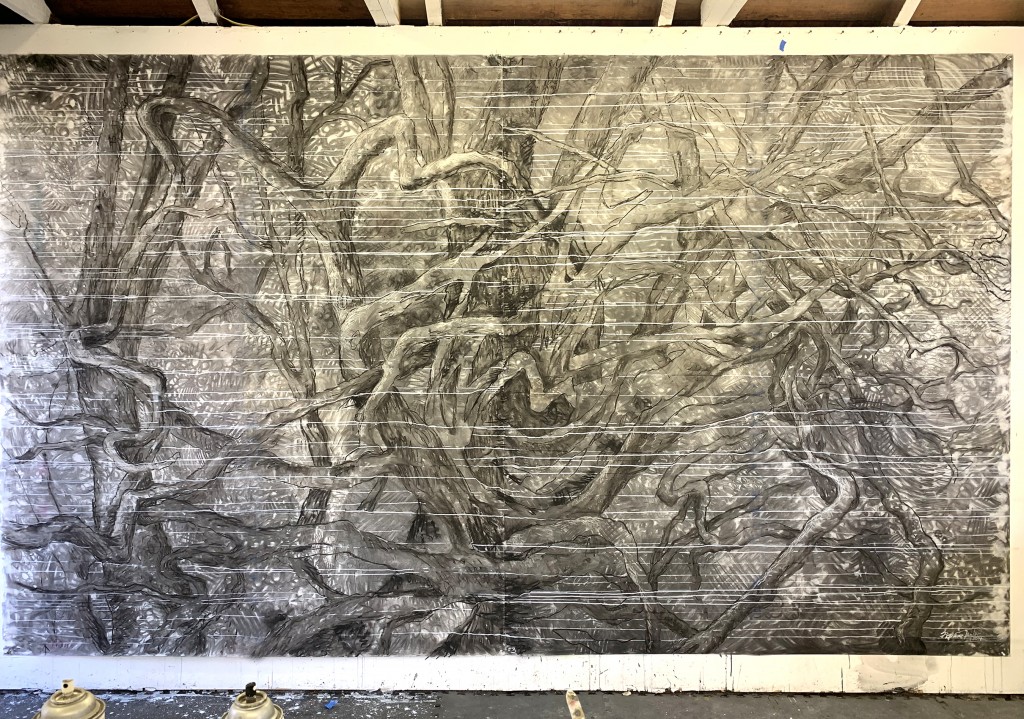
Update March 27: Studio, in process. On wall, “Wind,” one of the four elements. On table, the first layer, the start of “Fire,” another element. Using the charred remains of lumber from a home in Paradise as charcoal.
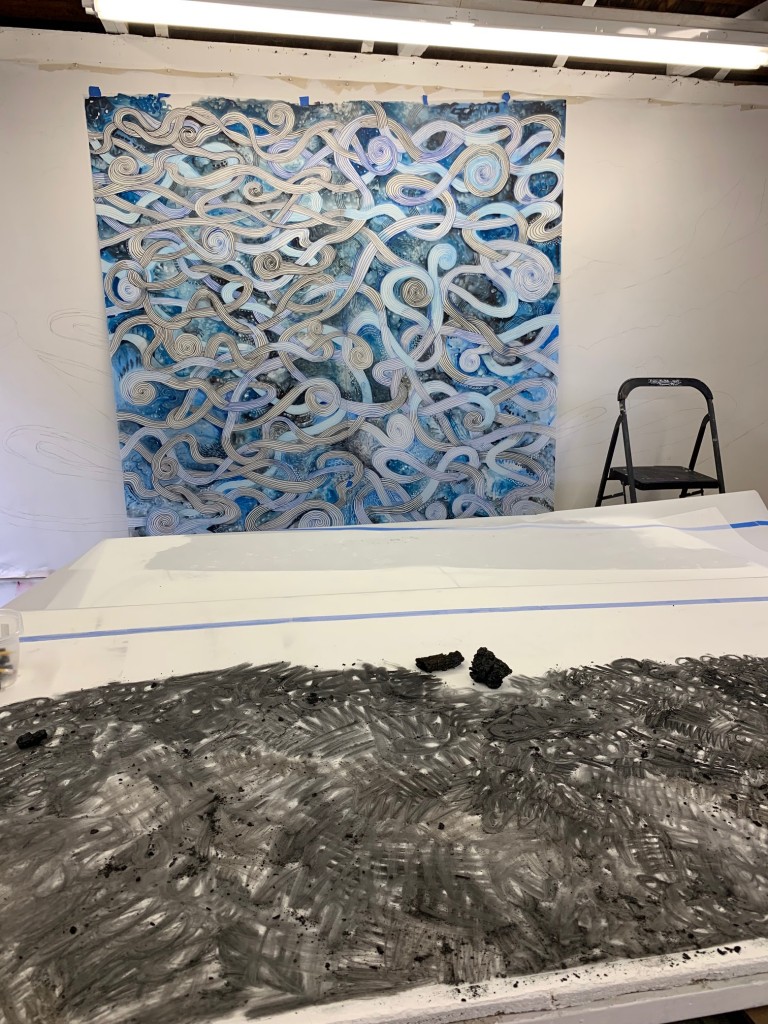
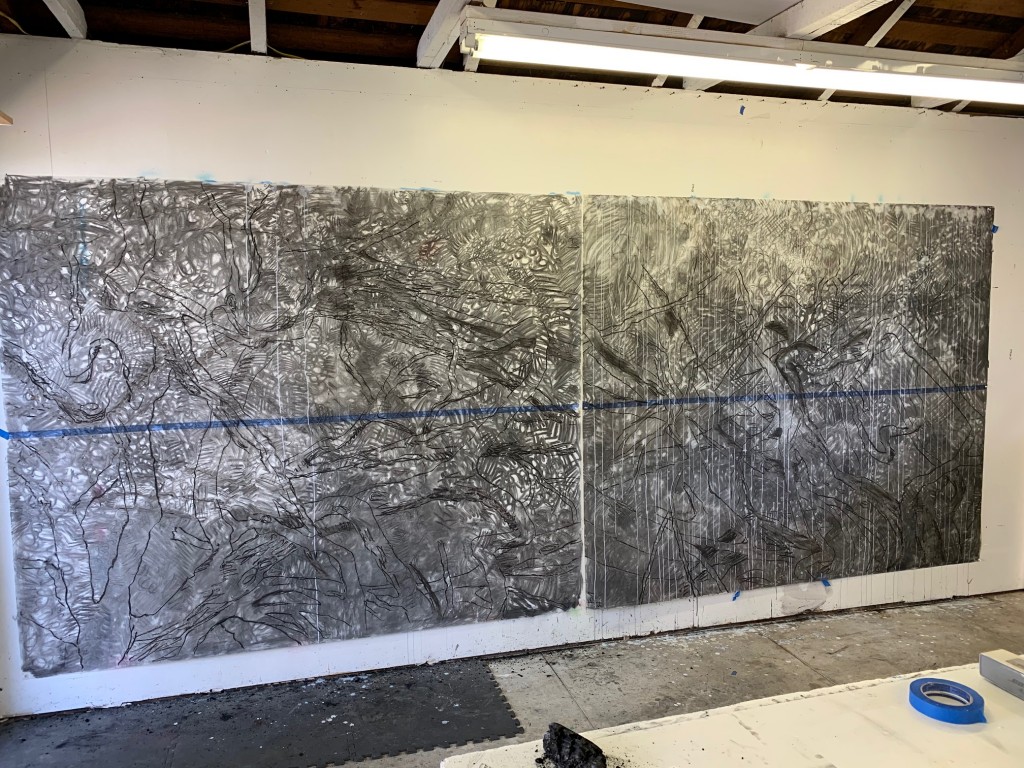
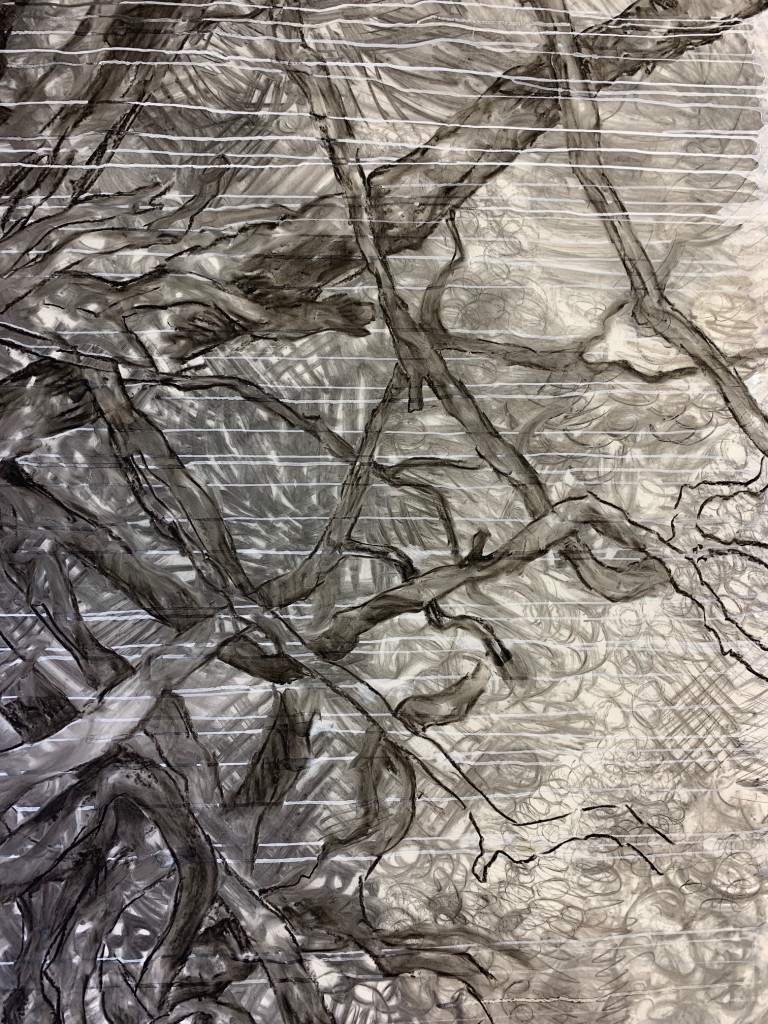
The Concept: At the Tate in 2003, I saw an exhibition of artifacts found in the Thames during construction, created as a “Cabinet of Curiosities.” My memory of those shallow drawers full of categories such as buttons persisted.
The brilliant Christy Heron-Clark, science writer and poet, and I are collaborating on an exhibition/installation this June. She was born in Paradise, I was born in Chico. Her family lost two homes. We’ve been to Paradise twice to make what we like to think of as contemporary archeological digs.
What makes an object resonate, objects that no longer have a value, except as memory?
What do we retain when we lose?
This will be an installation of essay and poetry, photography, drawings, video, and found objects. For drawing materials, I’m using charcoal: the burned lumber from her parent’s home.
This is a story told through the lens of objects. A hammer head with no handle. A box of slides charred and fused, hunting rifles with no stocks. As an artist, I respond to each as it exists, transformed. Categories of textures, melted glass, melted aluminum hubcaps, skeletal trees, locks that no longer lock, tools, and keepers of time frozen. Things from her father’s workshop, things from her mother’s garden.
This is also about process, about memory, and what objects tell us about what what they are, as they are.
